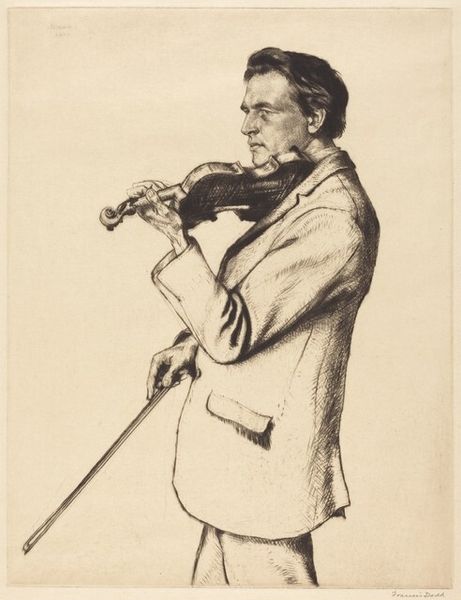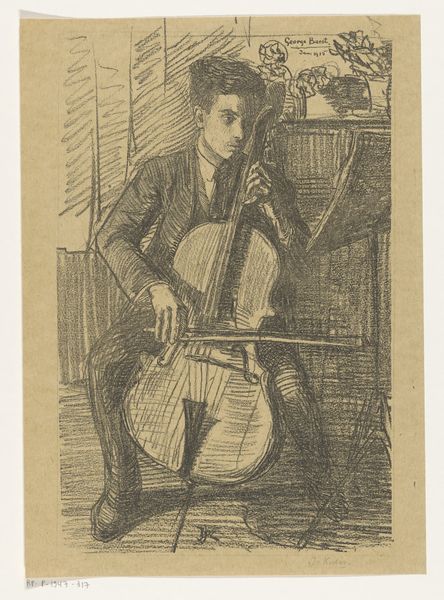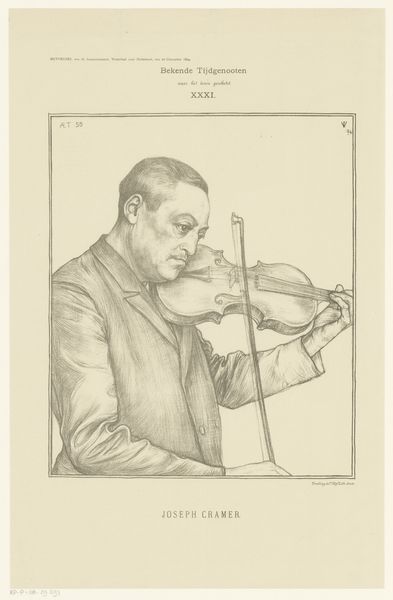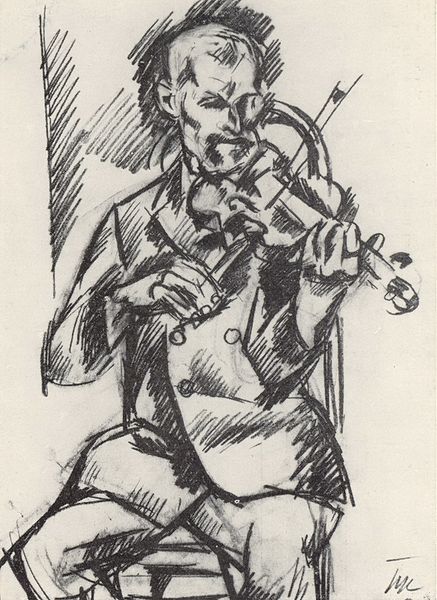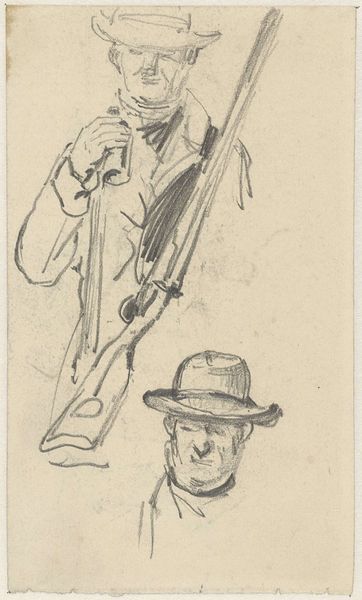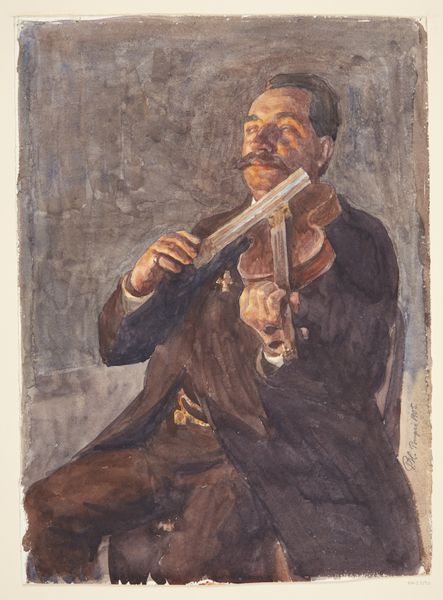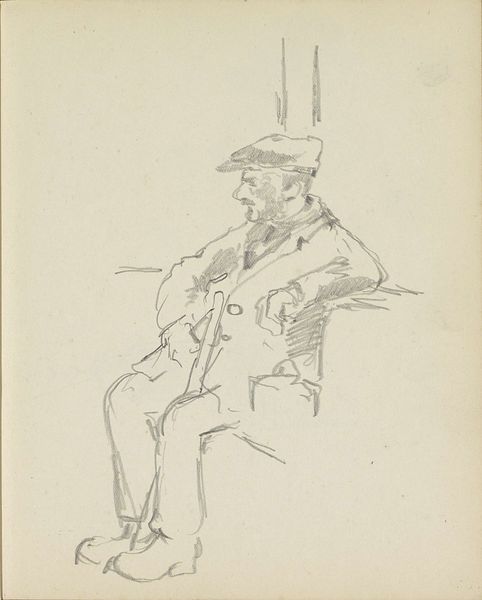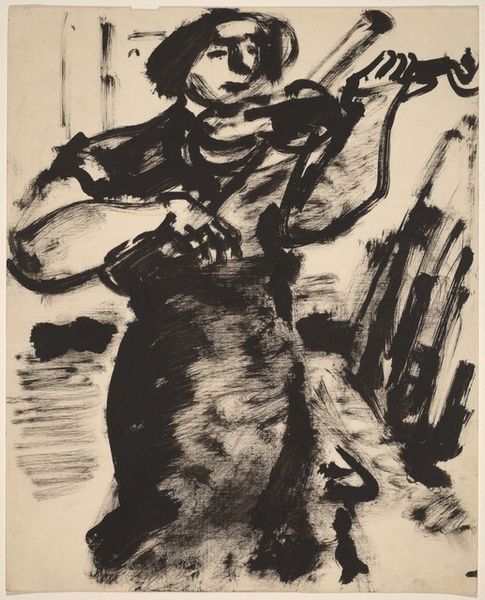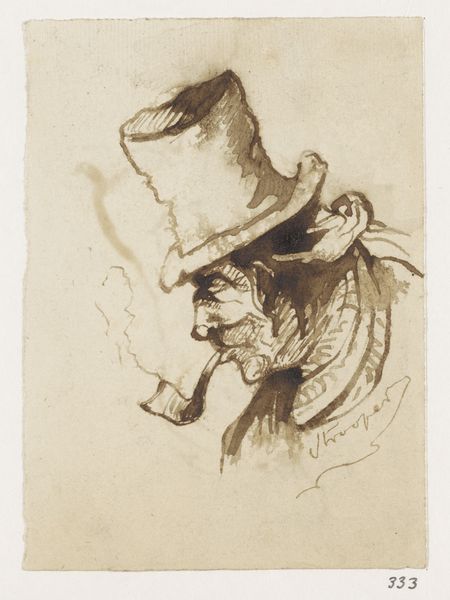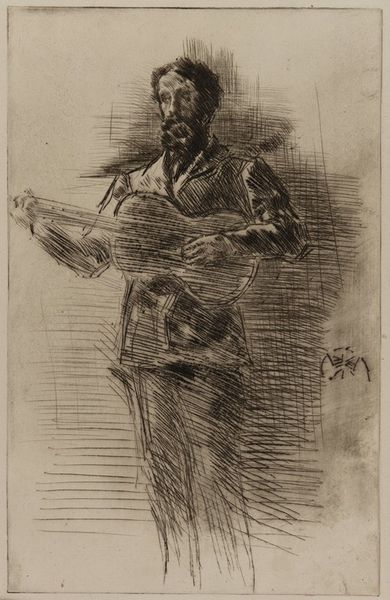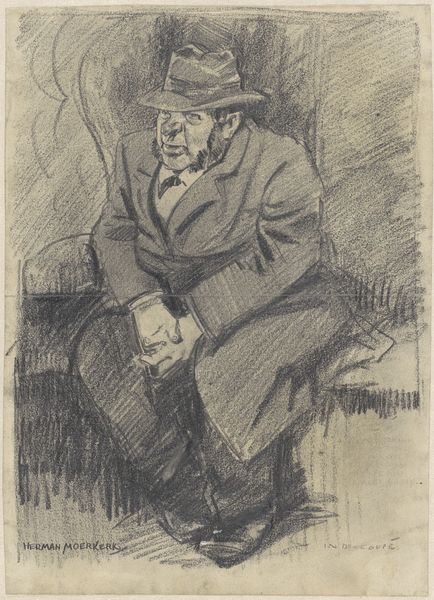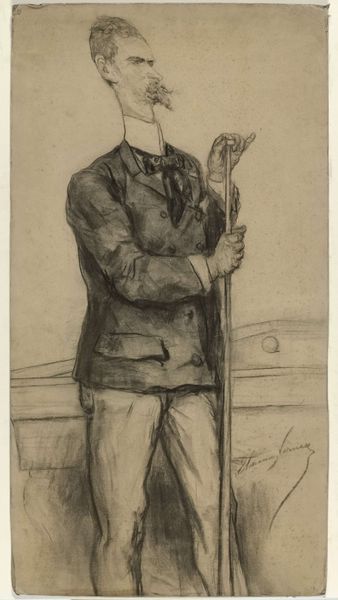
#
pencil drawn
#
amateur sketch
#
toned paper
#
light pencil work
#
pen sketch
#
pencil sketch
#
personal sketchbook
#
pen-ink sketch
#
sketchbook drawing
#
sketchbook art
Dimensions: height 246 mm, width 168 mm
Copyright: Rijks Museum: Open Domain
Editor: So, here we have Maria Hubrecht's "Trombonist," dating from between 1875 and 1950. It's a delicate sketch, it seems, maybe pencil and ink on paper. What strikes me most is the artist's focus on detail. How do you interpret the use of these seemingly simple materials in portraying such a complex figure? Curator: It's essential to look at the labor involved. Pencil and ink sketches were frequently made on location due to their relatively portable nature, but they can reflect a particular class of amateur artisanship. The material and production suggest an accessibility. What kind of access might the artist have had to the subject of this portrait, given these materials? Editor: Hmm, accessibility… maybe it implies a more informal, personal relationship between Hubrecht and the musician? Perhaps this wasn't a formal commission, but something made in a private or more relaxed setting? Curator: Exactly! Think about the social context of music and performance during this time. Where might one encounter a trombonist? How does the sketch format influence our perception of the musician, compared to, say, a formal oil portrait in a concert hall? Editor: That makes me wonder about the status of both the musician and the artist. The sketch doesn't glorify the sitter, but gives a candid snapshot; does that suggest an attempt to equalize them? Or is the artist using the medium as a method of exploring an interesting everyday person? Curator: Precisely! The 'everydayness' you mentioned, that is rooted in a social act as well, by engaging in and taking note of a daily occurance you reveal certain intentions. This invites consideration of art making as another form of labor and seeing how those forms connect the world with what and how they record. This 'non-preciousness', born of material simplicity, flattens hierarchies that one might find elsewhere. Editor: I see now. The choice of material isn't just about convenience, but actively shapes how we understand the artwork, the artist, and even the trombonist! Curator: Precisely. It’s a whole material culture we are looking at!
Comments
No comments
Be the first to comment and join the conversation on the ultimate creative platform.
